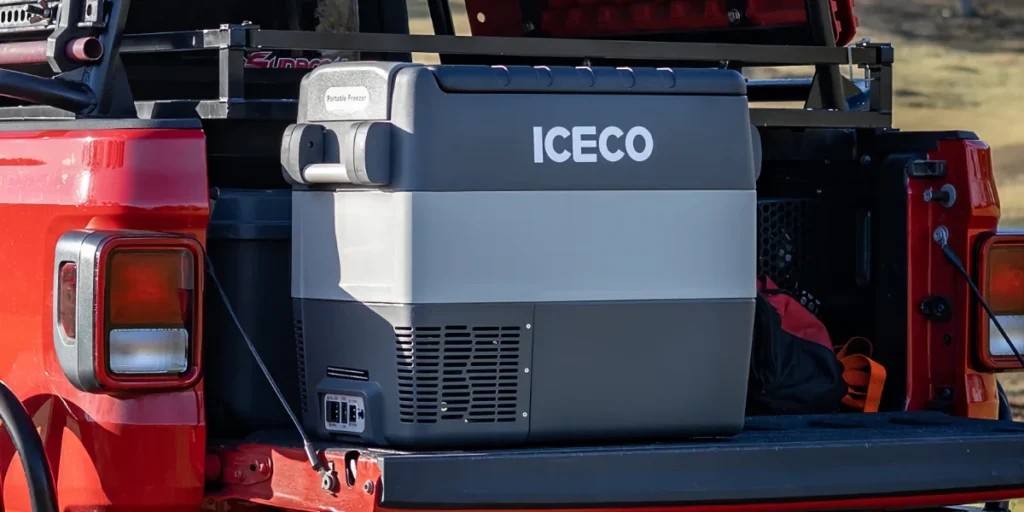Benefits of a Portable Refrigerator for Camping and Overlanding
A portable refrigerator can significantly enhance your camping or overlanding experience by ensuring your drinks stay cold and your food remains fresh. While budget-friendly thermo-electric coolers or basic compressor fridges might be tempting, investing in a high-quality model ensures efficiency and reliability in the long run.
The top-notch 12V compressor refrigerators are designed to maintain cold temperatures effectively, thanks to superior components, efficient layouts, and enhanced insulation. A fridge that seldom needs to activate its compressor or fans to keep a consistent temperature will use less energy, making it ideal for extended trips.

When choosing a portable refrigerator, prioritize durability, quality materials, and a solid reputation. A reliable fridge backed by a warranty can withstand rough outdoor conditions, ensuring your food and drinks are always kept at the right temperature.
Powering Your Portable Refrigerator
Although it’s possible to power a fridge from a 12V outlet using the vehicle’s main battery, this isn’t ideal, as the fridge will stop drawing power once the battery’s voltage falls below a safe level. Instead, consider a dual battery setup with a smart DC-to-DC charger and a deep-cycle auxiliary battery, which can be charged through the vehicle’s alternator and alternative sources like solar panels.
9 Tips for Using a Camping Refrigerator
- Power Consumption: Fridges can be energy-intensive, especially in hot weather. Power usage varies from 1 to 6 Amps per hour, with an average of around 2.5 Amps. For a typical 105Ah deep cycle battery, avoid discharging more than 50% to prevent damage. Strategies to minimize power draw are essential, particularly for those who camp off-grid without the option to plug into a 220V source for recharging.
- Pre-cooling: Before setting off, pre-cool your fridge using a 220V source (if it is compatible) and pre-chill or freeze your food and drinks. This initial step reduces the workload on your fridge during your trip.
- Insulation: Enhance your fridge’s efficiency with a high-quality insulated cover. Additional tactics like using wet towels for evaporative cooling can also be beneficial.
- Ventilation: Ensure proper ventilation for your fridge, particularly around the cooling fan area, to prevent ambient temperature increases.
- Sunlight Avoidance: Parking in the shade or using reflective materials can help keep your fridge and vehicle cooler.
- Efficient Usage: Consider a dual-zone fridge/freezer to manage different cooling needs efficiently or use dividers in a single-zone fridge to create separate cooling areas.
- Load Management: Introduce only cool items into the fridge to avoid excessive power consumption for cooling down warm items.
- Optimal Filling: A fully stocked fridge maintains its temperature more effectively than one that’s not, reducing the frequency of cooling cycles.
- Disciplined Access: Limit the frequency of opening the fridge to prevent warm air influx and energy waste.
Why a Backup Cooler is Essential for Camping and Overlanding
For additional cooling needs, especially for liquids or ice, consider using a rotomolded cooler as a backup. These coolers are extremely durable and provide excellent insulation, keeping contents cold for days without electricity. They’re ideal for storing drinks or as a supplemental ice supply, reducing the need to open the main fridge frequently and helping to maintain its temperature more consistently.
Brands like Yeti have championed this segment, but there are several budget-friendly competitors that offer similar performance. Investing in a quality rotomolded cooler can complement your portable refrigerator, ensuring you have sufficient cooling capacity for your outdoor adventures.
Understanding and implementing these tips can greatly improve your camping experience, ensuring you enjoy fresh food and cold drinks without unnecessary hassle or energy waste. Additionally, investing in an electric camping cooler can also be beneficial in emergency situations, like natural disasters or power outages.
Common Questions about Portable Refrigerators
The size of the portable refrigerator you need depends on the length of your trips and the number of people you need to cater for. For solo campers or weekend getaways, a 20-30 liter fridge is usually sufficient. For longer trips or larger groups, consider a 40-50 liter fridge. If you need to store food for extended periods or have multiple people, a fridge with a capacity of 60 liters or more might be necessary. Always consider the space available in your vehicle and the power requirements of the fridge.
Yes, you can run a portable refrigerator on solar power. This is a great option for extended off-grid adventures. To do this, you’ll need a solar panel setup, a solar charge controller, and a deep-cycle battery to store the energy. The solar panel should be able to generate enough power to run the fridge and charge the battery during the day. It’s important to calculate your fridge’s power consumption and ensure your solar setup is adequate. For example, if your fridge uses 30-50 watts per hour, you’ll need a solar panel that can produce at least this much energy consistently.
There are several ways to improve the efficiency of your portable refrigerator:
Pre-cool your fridge and its contents: Before your trip, cool the fridge using a 220V source and pre-chill or freeze your food and drinks.
Use an insulated cover: This helps maintain the fridge’s internal temperature and reduces the frequency of cooling cycles.
Ventilation: Ensure proper ventilation around the fridge, especially around the cooling fan area, to prevent overheating.
Keep it shaded: Park in the shade or use reflective materials to keep your fridge and vehicle cooler.
Efficient packing: A fully stocked fridge maintains its temperature better than a half-empty one. Organize items efficiently and only introduce cool items into the fridge.
Minimize door openings: Try to limit the number of times you open the fridge to prevent warm air from entering and causing the fridge to work harder to cool down.